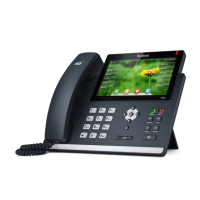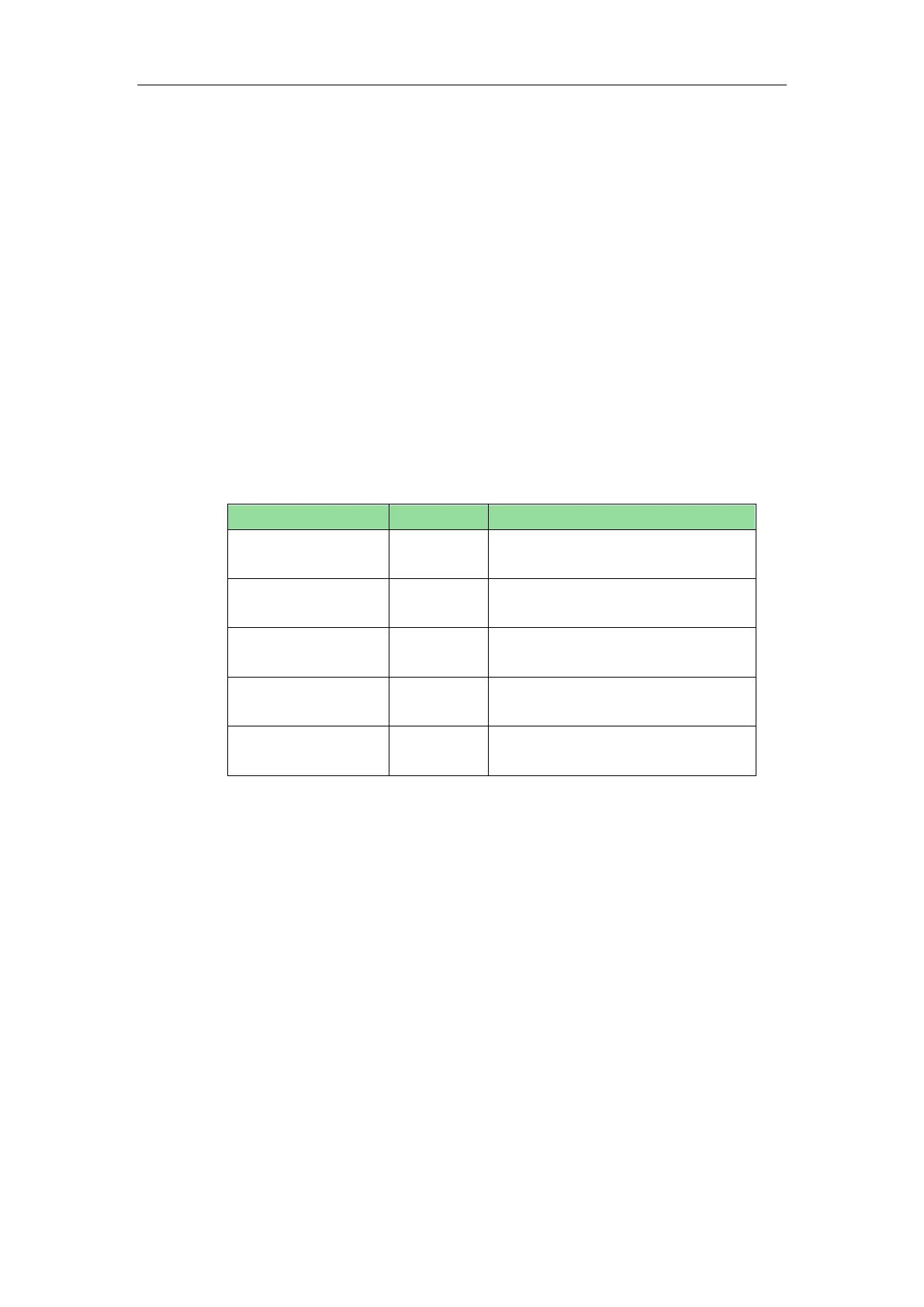Administrator’s Guide for SIP-T2 Series/T19(P) E2/T4 Series/CP860 IP Phones
204
place the dial-now template to the provisioning server and specify the access URL in the
configuration files.
You can ask the distributor or Yealink FAE for dial-now template. You can also obtain the
dial-now template online:
http://support.yealink.com/documentFront/forwardToDocumentFrontDisplayPage. For more
information on obtaining the dial-now template, refer to Obtaining Configuration Files
and Resource Files on page 48.
When editing a dial-now template, learn the following:
<DialNow> indicates the start of a template and </DialNow> indicates the end of
a template.
When specifying the desired line(s) for the dial-now rule, the valid values are 0 and
line ID. Multiple line IDs are separated by commas. It is not applicable to SIP-T19(P)
E2 and CP860 IP phones.
The following table lists valid values of line ID for each phone model.
0 stands for all lines
1~16 stand for line1~line16
0 stands for all lines
1~12 stand for line1~line12
0 stands for all lines
1~6 stand for line1~line6
0 stands for all lines
1~3 stand for line1~line3
0 stands for all lines
1~2 stand for line1~line2
At most 100 rules can be added to the IP phone.
The expression syntax in the dial-now rule template is the same as that introduced in the
section Dial Plan on page 195.
To customize a dial-now template:
1. Open the template file using an ASCII editor.
2. Create dial-now rules between <DialNow> and </DialNow>.
For example:
<Data DialNowRule="1001" LineID="0" />
Where:
DialNowRule="" specifies the dial-now rule.

